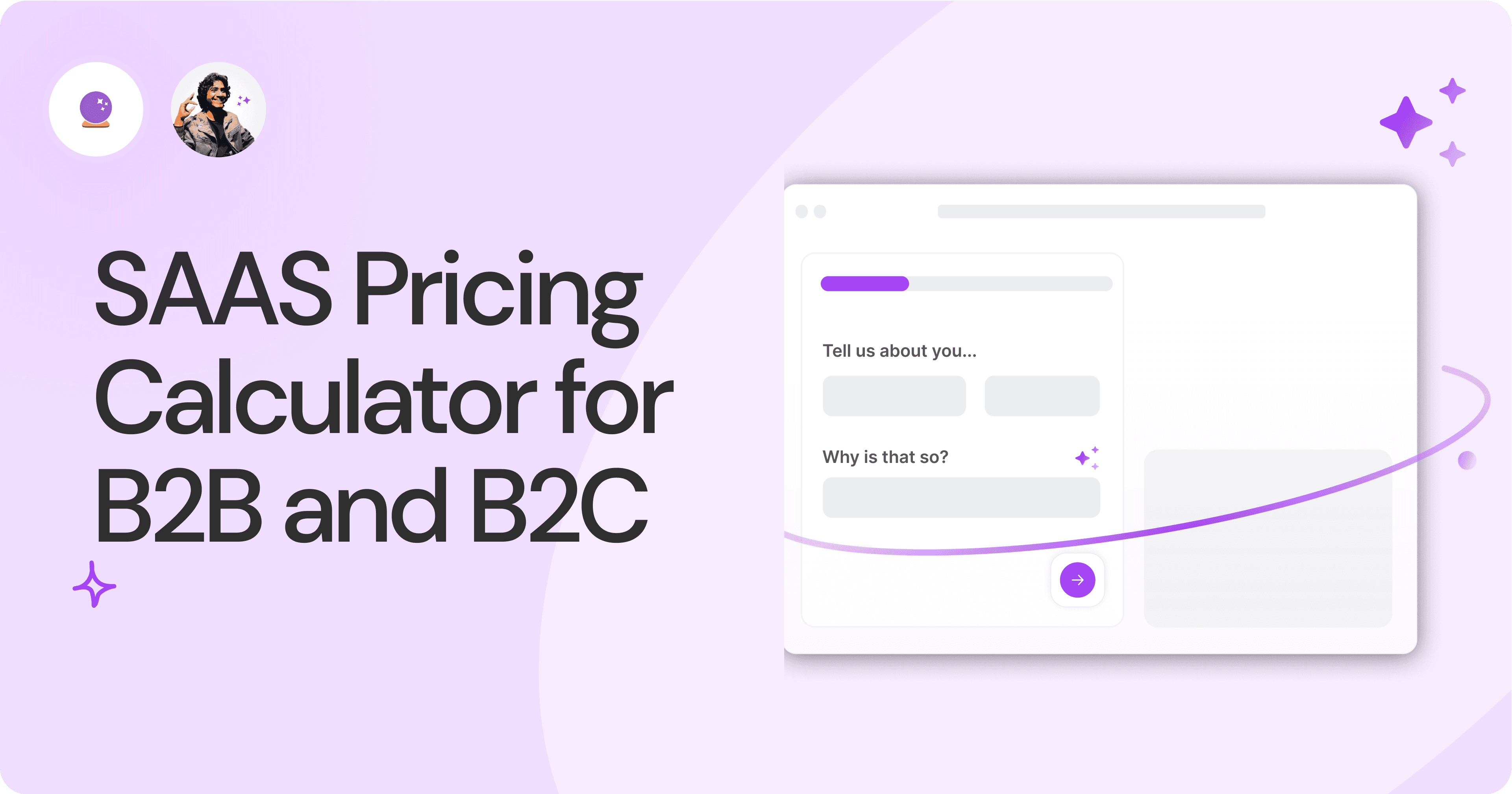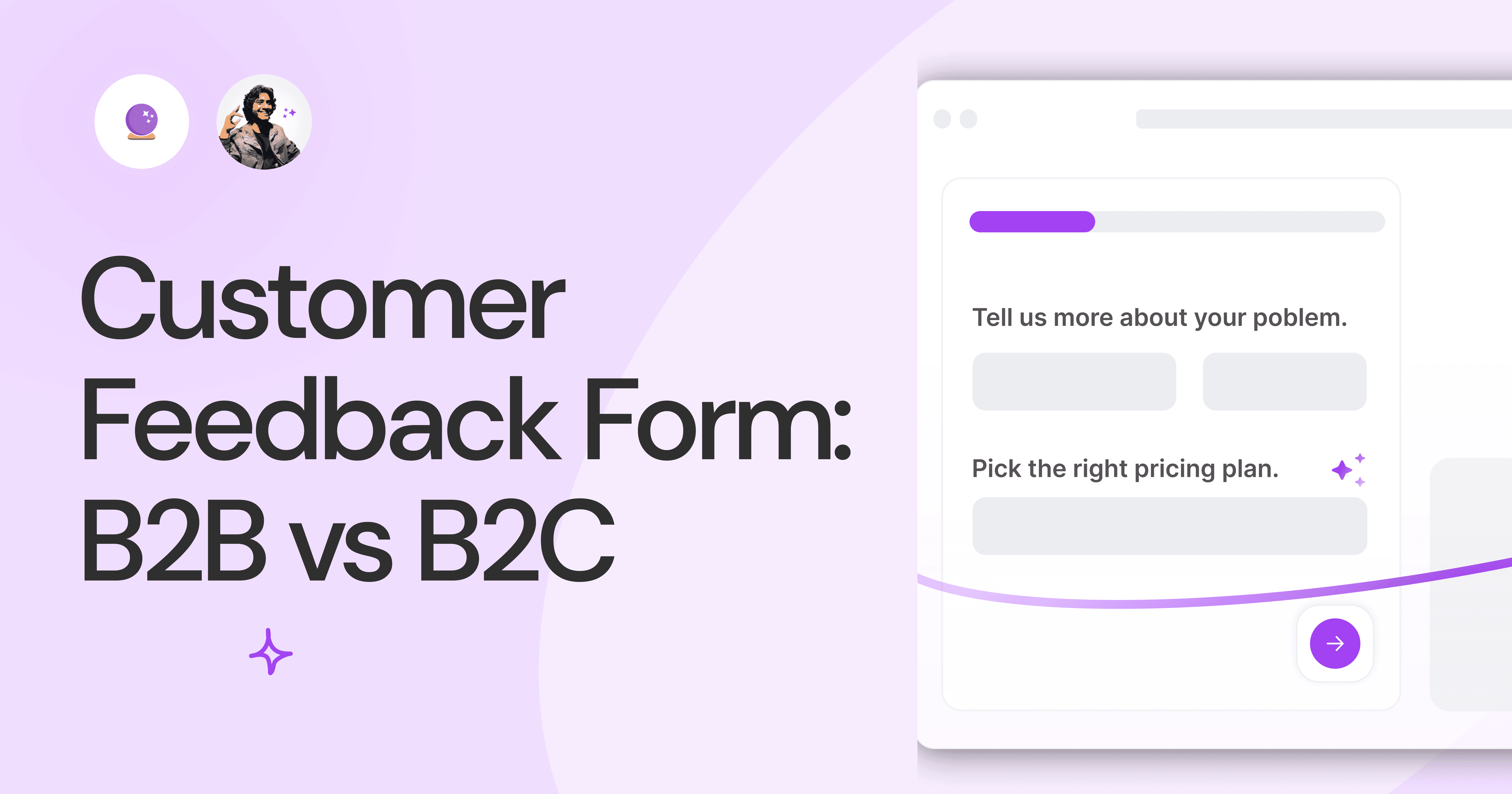Form UX Design: Best Practices and Tips for User-Friendly Forms
Form UX Design: Best Practices and Tips for User-Friendly Forms
Form UX Design: Best Practices and Tips for User-Friendly Forms
From input field layout to providing clear CTAs, explore 7 best practices for creating user friendly form UX design
From input field layout to providing clear CTAs, explore 7 best practices for creating user friendly form UX design
From input field layout to providing clear CTAs, explore 7 best practices for creating user friendly form UX design



94% of users think that a website reflects the brand reputation and the brand comes from how its website looks. This clearly indicates that form UX design is an important aspect in shaping how users perceive a brand.
Now think of a website you frequently visit and ask yourself the following questions.
Is the site navigation easy to use?
What is the page loading time?
Can you quickly find the information you’re looking for?
Well, these are all aspects of a website’s user experience (UX) which impacts how users interact with a site. It applies to every part of the website including web forms, ease of use and convenience. This is the reason why getting UX forms right is imperative for any business.
Did you Know: According to Business Research Insights, the global UX market valued at $6,120.44 million in 2021 is expected to reach $20,058 million by 2028, with a projected CAGR of 16.24%.
7 UX Form Design Practices to Follow
With AI playing a crucial role in enhancing user experiences, utilising advanced form solutions like those offered by Metaforms can greatly impact how users view your brand.
The main aim of form UX design is to gather user data. If a form isn’t visually appealing, people are definitely not going to fill it. To help you out, we have created the following list of guidelines which elaborates on how to design UX forms that users love to fill out.
Visuals Matter!
It is quite clear that if a site has poorly designed or complicated long web forms, visitors are less likely to fill it. This creates a huge gap in generating leads and achieving conversions. To keep your visitors hooked to your site, it’s imperative that you must focus on aesthetics. Here are a few ways in which you can make your UX forms visually appealing.
Minimize the objects and texts on the page to streamline the form completion process
Shape, size, color, typography, photography, layout, and more play a crucial role in the effectiveness of UX design form
Clearly simple forms with clean design to reduce user confusion
Use a one-column layout for better readability
Don’t forget to optimize for mobile
As per UX statistics, 55% of internet traffic comes from smartphones and tablets. This is why optimizing for mobile is essential for business owners.
A good UX form design means that your visitors have a smooth journey right from the time they enter your website till they sign out. They should enjoy their experience regardless of them using a computer or a mobile device. If your site isn't mobile-friendly, your forms won't help improve UX or create conversions for that matter. Here’s how you can optimize your UX forms for mobile devices:
Responsive form design adapting to different screen sizes
Simplify the layout to minimize scrolling
Buttons, checkboxes and other responsive element should be incorporated
Group Related Fields
Organizing related fields together helps users understand the intent of the form. This approach reduces cognitive load and guides users through the process. Some of the tips you can follow to implement it are as follows:
Divide the form into clear headers and sub headers
Make sure there's ample white space between sections for better readability
Keep the layout consistent throughout the form
Minimize Form Field Layout
Try to lay out the form in a single column as against placing multiple fields in the same row. Minimizing required fields will help your visitor see all necessary fields and they will be able to follow the form with ease. This can also significantly improve form completion rates. A few tips on how you can minimize form field layout:
Ask for information that is critical to your purpose
Use conditional logic to display additional fields only when required
Use an asterisk (*) to indicate fields that are important to fill
Please note: While single column layouts are generally preferred owing to the ease of reading, the best layout should consider the Form UX context.
Provide Clear Call to Action (CTA)
A clear and obvious action button improves a form’s accessibility as they are so easy to see. A clear CTA also helps your visitor to know what’s going to happen when they press the button! This is actually the final action they would take before proceeding to another page.
Needless to say, they are a crucial part of your web form. You can make your CTAs impactful by following these tips:
Make it visible and distinct by using a contrasting color or position it in a noticeable way
Action oriented like ‘Submit’, ‘Register’ should be used
Show Users the Value and Benefits
Many businesses rely on people successfully filling the form, however, visitors are less likely to convert if the purpose is unclear. You must make them understand the benefits they’ll get to enjoy by filling the form. Everyone deserves to know that the time they spend filling the form is worth it. You can make your form simple and valuable by following these tips:
A clear form title is crucial to explain what the form is for
You must think of the title as an action statement and choose your words carefully
Testing and Improvement
This is the most important rule on the list of the best UX design practices. No matter how visually appealing your form is you must check if your form actually works. Testing is one of the ways you can check if your UX form is effective and that it will actually lead to conversions.
Test that your form is seamlessly integrated with other website elements
Regularly test all form input fields and variables for functionality and issues, if any
Gather honest feedback from actual users
Employ A/B testing to refine the form design via real user data
Why Does Form UX Matter?
Simply put, an excellent form design helps increase conversions. Here is a summary highlighting the importance of great form UX design.
Web forms are an excellent way to gather important data from visitors
A form that is visually appealing attracts visitors to engage with your business
Good UX forms lead to more conversions by providing a positive experience
A well designed intuitive form guide users towards their goal
As you focus on user experience in form design, consider how AI can transform your approach. One such advanced solution is offered by Metaforms that offers the personalization needed to meet the demand for today’s digital interactions.
Wrapping Up!
By following the 7 best practices and tips listed above, you can design UX forms that are intuitive and engaging in achieving your desired goals. Effective UX forms are crucial for lead generation and driving conversions.
The key to successful form UX design is to prioritize the user experience. To do that, test your forms with real users and gather feedback to enhance usability. That being said, it isn’t a one time effort. You must keep optimizing your forms based on user feedback.
94% of users think that a website reflects the brand reputation and the brand comes from how its website looks. This clearly indicates that form UX design is an important aspect in shaping how users perceive a brand.
Now think of a website you frequently visit and ask yourself the following questions.
Is the site navigation easy to use?
What is the page loading time?
Can you quickly find the information you’re looking for?
Well, these are all aspects of a website’s user experience (UX) which impacts how users interact with a site. It applies to every part of the website including web forms, ease of use and convenience. This is the reason why getting UX forms right is imperative for any business.
Did you Know: According to Business Research Insights, the global UX market valued at $6,120.44 million in 2021 is expected to reach $20,058 million by 2028, with a projected CAGR of 16.24%.
7 UX Form Design Practices to Follow
With AI playing a crucial role in enhancing user experiences, utilising advanced form solutions like those offered by Metaforms can greatly impact how users view your brand.
The main aim of form UX design is to gather user data. If a form isn’t visually appealing, people are definitely not going to fill it. To help you out, we have created the following list of guidelines which elaborates on how to design UX forms that users love to fill out.
Visuals Matter!
It is quite clear that if a site has poorly designed or complicated long web forms, visitors are less likely to fill it. This creates a huge gap in generating leads and achieving conversions. To keep your visitors hooked to your site, it’s imperative that you must focus on aesthetics. Here are a few ways in which you can make your UX forms visually appealing.
Minimize the objects and texts on the page to streamline the form completion process
Shape, size, color, typography, photography, layout, and more play a crucial role in the effectiveness of UX design form
Clearly simple forms with clean design to reduce user confusion
Use a one-column layout for better readability
Don’t forget to optimize for mobile
As per UX statistics, 55% of internet traffic comes from smartphones and tablets. This is why optimizing for mobile is essential for business owners.
A good UX form design means that your visitors have a smooth journey right from the time they enter your website till they sign out. They should enjoy their experience regardless of them using a computer or a mobile device. If your site isn't mobile-friendly, your forms won't help improve UX or create conversions for that matter. Here’s how you can optimize your UX forms for mobile devices:
Responsive form design adapting to different screen sizes
Simplify the layout to minimize scrolling
Buttons, checkboxes and other responsive element should be incorporated
Group Related Fields
Organizing related fields together helps users understand the intent of the form. This approach reduces cognitive load and guides users through the process. Some of the tips you can follow to implement it are as follows:
Divide the form into clear headers and sub headers
Make sure there's ample white space between sections for better readability
Keep the layout consistent throughout the form
Minimize Form Field Layout
Try to lay out the form in a single column as against placing multiple fields in the same row. Minimizing required fields will help your visitor see all necessary fields and they will be able to follow the form with ease. This can also significantly improve form completion rates. A few tips on how you can minimize form field layout:
Ask for information that is critical to your purpose
Use conditional logic to display additional fields only when required
Use an asterisk (*) to indicate fields that are important to fill
Please note: While single column layouts are generally preferred owing to the ease of reading, the best layout should consider the Form UX context.
Provide Clear Call to Action (CTA)
A clear and obvious action button improves a form’s accessibility as they are so easy to see. A clear CTA also helps your visitor to know what’s going to happen when they press the button! This is actually the final action they would take before proceeding to another page.
Needless to say, they are a crucial part of your web form. You can make your CTAs impactful by following these tips:
Make it visible and distinct by using a contrasting color or position it in a noticeable way
Action oriented like ‘Submit’, ‘Register’ should be used
Show Users the Value and Benefits
Many businesses rely on people successfully filling the form, however, visitors are less likely to convert if the purpose is unclear. You must make them understand the benefits they’ll get to enjoy by filling the form. Everyone deserves to know that the time they spend filling the form is worth it. You can make your form simple and valuable by following these tips:
A clear form title is crucial to explain what the form is for
You must think of the title as an action statement and choose your words carefully
Testing and Improvement
This is the most important rule on the list of the best UX design practices. No matter how visually appealing your form is you must check if your form actually works. Testing is one of the ways you can check if your UX form is effective and that it will actually lead to conversions.
Test that your form is seamlessly integrated with other website elements
Regularly test all form input fields and variables for functionality and issues, if any
Gather honest feedback from actual users
Employ A/B testing to refine the form design via real user data
Why Does Form UX Matter?
Simply put, an excellent form design helps increase conversions. Here is a summary highlighting the importance of great form UX design.
Web forms are an excellent way to gather important data from visitors
A form that is visually appealing attracts visitors to engage with your business
Good UX forms lead to more conversions by providing a positive experience
A well designed intuitive form guide users towards their goal
As you focus on user experience in form design, consider how AI can transform your approach. One such advanced solution is offered by Metaforms that offers the personalization needed to meet the demand for today’s digital interactions.
Wrapping Up!
By following the 7 best practices and tips listed above, you can design UX forms that are intuitive and engaging in achieving your desired goals. Effective UX forms are crucial for lead generation and driving conversions.
The key to successful form UX design is to prioritize the user experience. To do that, test your forms with real users and gather feedback to enhance usability. That being said, it isn’t a one time effort. You must keep optimizing your forms based on user feedback.
94% of users think that a website reflects the brand reputation and the brand comes from how its website looks. This clearly indicates that form UX design is an important aspect in shaping how users perceive a brand.
Now think of a website you frequently visit and ask yourself the following questions.
Is the site navigation easy to use?
What is the page loading time?
Can you quickly find the information you’re looking for?
Well, these are all aspects of a website’s user experience (UX) which impacts how users interact with a site. It applies to every part of the website including web forms, ease of use and convenience. This is the reason why getting UX forms right is imperative for any business.
Did you Know: According to Business Research Insights, the global UX market valued at $6,120.44 million in 2021 is expected to reach $20,058 million by 2028, with a projected CAGR of 16.24%.
7 UX Form Design Practices to Follow
With AI playing a crucial role in enhancing user experiences, utilising advanced form solutions like those offered by Metaforms can greatly impact how users view your brand.
The main aim of form UX design is to gather user data. If a form isn’t visually appealing, people are definitely not going to fill it. To help you out, we have created the following list of guidelines which elaborates on how to design UX forms that users love to fill out.
Visuals Matter!
It is quite clear that if a site has poorly designed or complicated long web forms, visitors are less likely to fill it. This creates a huge gap in generating leads and achieving conversions. To keep your visitors hooked to your site, it’s imperative that you must focus on aesthetics. Here are a few ways in which you can make your UX forms visually appealing.
Minimize the objects and texts on the page to streamline the form completion process
Shape, size, color, typography, photography, layout, and more play a crucial role in the effectiveness of UX design form
Clearly simple forms with clean design to reduce user confusion
Use a one-column layout for better readability
Don’t forget to optimize for mobile
As per UX statistics, 55% of internet traffic comes from smartphones and tablets. This is why optimizing for mobile is essential for business owners.
A good UX form design means that your visitors have a smooth journey right from the time they enter your website till they sign out. They should enjoy their experience regardless of them using a computer or a mobile device. If your site isn't mobile-friendly, your forms won't help improve UX or create conversions for that matter. Here’s how you can optimize your UX forms for mobile devices:
Responsive form design adapting to different screen sizes
Simplify the layout to minimize scrolling
Buttons, checkboxes and other responsive element should be incorporated
Group Related Fields
Organizing related fields together helps users understand the intent of the form. This approach reduces cognitive load and guides users through the process. Some of the tips you can follow to implement it are as follows:
Divide the form into clear headers and sub headers
Make sure there's ample white space between sections for better readability
Keep the layout consistent throughout the form
Minimize Form Field Layout
Try to lay out the form in a single column as against placing multiple fields in the same row. Minimizing required fields will help your visitor see all necessary fields and they will be able to follow the form with ease. This can also significantly improve form completion rates. A few tips on how you can minimize form field layout:
Ask for information that is critical to your purpose
Use conditional logic to display additional fields only when required
Use an asterisk (*) to indicate fields that are important to fill
Please note: While single column layouts are generally preferred owing to the ease of reading, the best layout should consider the Form UX context.
Provide Clear Call to Action (CTA)
A clear and obvious action button improves a form’s accessibility as they are so easy to see. A clear CTA also helps your visitor to know what’s going to happen when they press the button! This is actually the final action they would take before proceeding to another page.
Needless to say, they are a crucial part of your web form. You can make your CTAs impactful by following these tips:
Make it visible and distinct by using a contrasting color or position it in a noticeable way
Action oriented like ‘Submit’, ‘Register’ should be used
Show Users the Value and Benefits
Many businesses rely on people successfully filling the form, however, visitors are less likely to convert if the purpose is unclear. You must make them understand the benefits they’ll get to enjoy by filling the form. Everyone deserves to know that the time they spend filling the form is worth it. You can make your form simple and valuable by following these tips:
A clear form title is crucial to explain what the form is for
You must think of the title as an action statement and choose your words carefully
Testing and Improvement
This is the most important rule on the list of the best UX design practices. No matter how visually appealing your form is you must check if your form actually works. Testing is one of the ways you can check if your UX form is effective and that it will actually lead to conversions.
Test that your form is seamlessly integrated with other website elements
Regularly test all form input fields and variables for functionality and issues, if any
Gather honest feedback from actual users
Employ A/B testing to refine the form design via real user data
Why Does Form UX Matter?
Simply put, an excellent form design helps increase conversions. Here is a summary highlighting the importance of great form UX design.
Web forms are an excellent way to gather important data from visitors
A form that is visually appealing attracts visitors to engage with your business
Good UX forms lead to more conversions by providing a positive experience
A well designed intuitive form guide users towards their goal
As you focus on user experience in form design, consider how AI can transform your approach. One such advanced solution is offered by Metaforms that offers the personalization needed to meet the demand for today’s digital interactions.
Wrapping Up!
By following the 7 best practices and tips listed above, you can design UX forms that are intuitive and engaging in achieving your desired goals. Effective UX forms are crucial for lead generation and driving conversions.
The key to successful form UX design is to prioritize the user experience. To do that, test your forms with real users and gather feedback to enhance usability. That being said, it isn’t a one time effort. You must keep optimizing your forms based on user feedback.

SAAS Pricing Calculators: B2B v B2C Online Forms.
The SaaS pricing calculator is an essential tool for both B2B and B2C SaaS companies. But how do you build it, right? We have you covered.

B2B SaaS: Making Book a Demo Form.
Having the perfect book a demo form for B2B SaaS is the first step in capturing leads. There are a few fundamental techniques to get this form right. Read on.

How to Get Started With SaaS Onboarding.
SaaS onboarding is essential for customer onboarding in B2B and B2C SaaS. Let’s understand its fundamentals, including the metrics.

Customer Feedback Form: B2B vs B2C.
Why is customer feedback important? Because it dictates progress on B2B and B2B products and services for the customer to meet their goals.

SaaS Customer Feedback Form: 6 Main Types.
As much as SaaS is self-serve, the role of a customer feedback form is highly relevant. There are different types, each with its use case and sections.

Role of a Product Survey in SaaS.
SaaS is all about creating products for specific use cases. This is where a product survey becomes all the more important to know the user deeply.

Should You Do a SaaS Market Survey?
Every SaaS company wants to grow fast. But without a market survey, growth isn't possible or sustainable. Let’s see how to do a market survey.

SAAS Pricing Calculators: B2B v B2C Online Forms.
The SaaS pricing calculator is an essential tool for both B2B and B2C SaaS companies. But how do you build it, right? We have you covered.

B2B SaaS: Making Book a Demo Form.
Having the perfect book a demo form for B2B SaaS is the first step in capturing leads. There are a few fundamental techniques to get this form right. Read on.

How to Get Started With SaaS Onboarding.
SaaS onboarding is essential for customer onboarding in B2B and B2C SaaS. Let’s understand its fundamentals, including the metrics.

Customer Feedback Form: B2B vs B2C.
Why is customer feedback important? Because it dictates progress on B2B and B2B products and services for the customer to meet their goals.

SaaS Customer Feedback Form: 6 Main Types.
As much as SaaS is self-serve, the role of a customer feedback form is highly relevant. There are different types, each with its use case and sections.

Role of a Product Survey in SaaS.
SaaS is all about creating products for specific use cases. This is where a product survey becomes all the more important to know the user deeply.

Should You Do a SaaS Market Survey?
Every SaaS company wants to grow fast. But without a market survey, growth isn't possible or sustainable. Let’s see how to do a market survey.

SAAS Pricing Calculators: B2B v B2C Online Forms.
The SaaS pricing calculator is an essential tool for both B2B and B2C SaaS companies. But how do you build it, right? We have you covered.

B2B SaaS: Making Book a Demo Form.
Having the perfect book a demo form for B2B SaaS is the first step in capturing leads. There are a few fundamental techniques to get this form right. Read on.

How to Get Started With SaaS Onboarding.
SaaS onboarding is essential for customer onboarding in B2B and B2C SaaS. Let’s understand its fundamentals, including the metrics.

Customer Feedback Form: B2B vs B2C.
Why is customer feedback important? Because it dictates progress on B2B and B2B products and services for the customer to meet their goals.

SaaS Customer Feedback Form: 6 Main Types.
As much as SaaS is self-serve, the role of a customer feedback form is highly relevant. There are different types, each with its use case and sections.

Role of a Product Survey in SaaS.
SaaS is all about creating products for specific use cases. This is where a product survey becomes all the more important to know the user deeply.

Should You Do a SaaS Market Survey?
Every SaaS company wants to grow fast. But without a market survey, growth isn't possible or sustainable. Let’s see how to do a market survey.

Nine Types of Healthcare and Medical Forms.
Medical forms are a must-have for any healthcare business or practitioner. Learn about the different kinds of medical and healthcare forms.

4 Tips for Better Medical History Forms.
Medical history forms are central to patient care, onboarding, and medical administration records. Learn how to make them easier to fill.

How to Build Mental Health Intake Forms?
Mental health intake forms are not like patient intake forms. Mental health intake forms deal with far more sensitive data and have specific design methods.

What, Why and How of Telemedicine Forms.
Telemedicine is on the rise and with different form builders out there, which one best suits your needs as a healthcare services provider?

3 Reasons for Major Drop-Offs in Medical Forms.
No matter which healthcare form we pick, there are major drop-off reasons. We shall dive into the top 3 and learn how to resolve them in your next form.

Patient Onboarding Forms - From Click to Clinic.
Patient onboarding forms are the first touchpoint for patients; getting this right for higher conversion rates is a must-have. Learn how to perfect them now.

5 Key Parts of a Good Patient Satisfaction Form.
The goal of patient satisfaction surveys is to course-correct the services of a healthcare provider. Patient feedback leads to a culture of patient-centric care.

Build Quick and Easy Medical Release Forms.
Every HIPAA-compliant healthcare provider comes across medical release forms that involve details from medical history forms. Can they be shipped fast? Yes.

SAAS Pricing Calculators: B2B v B2C Online Forms.
The SaaS pricing calculator is an essential tool for both B2B and B2C SaaS companies. But how do you build it, right? We have you covered.

B2B SaaS: Making Book a Demo Form.
Having the perfect book a demo form for B2B SaaS is the first step in capturing leads. There are a few fundamental techniques to get this form right. Read on.

How to Get Started With SaaS Onboarding.
SaaS onboarding is essential for customer onboarding in B2B and B2C SaaS. Let’s understand its fundamentals, including the metrics.

Customer Feedback Form: B2B vs B2C.
Why is customer feedback important? Because it dictates progress on B2B and B2B products and services for the customer to meet their goals.

SaaS Customer Feedback Form: 6 Main Types.
As much as SaaS is self-serve, the role of a customer feedback form is highly relevant. There are different types, each with its use case and sections.

Role of a Product Survey in SaaS.
SaaS is all about creating products for specific use cases. This is where a product survey becomes all the more important to know the user deeply.

Should You Do a SaaS Market Survey?
Every SaaS company wants to grow fast. But without a market survey, growth isn't possible or sustainable. Let’s see how to do a market survey.
Subscribe to stay updated.
Subscribe to stay updated.
Subscribe to stay updated.
HC

HC

HC

HC

70+ people from across industries read our emails.
HC

HC

70+ people from across industries read our emails.
HC

HC

HC

70+ people from across industries read our emails.




Bangalore, India / San Francisco, US
WorkHack Inc. 2023
Bangalore, India
San Francisco, US
WorkHack Inc. 2023
WorkHack Inc. 2023
Bangalore, India / San Francisco, US
WorkHack Inc. 2023
Bangalore, India / San Francisco, US



